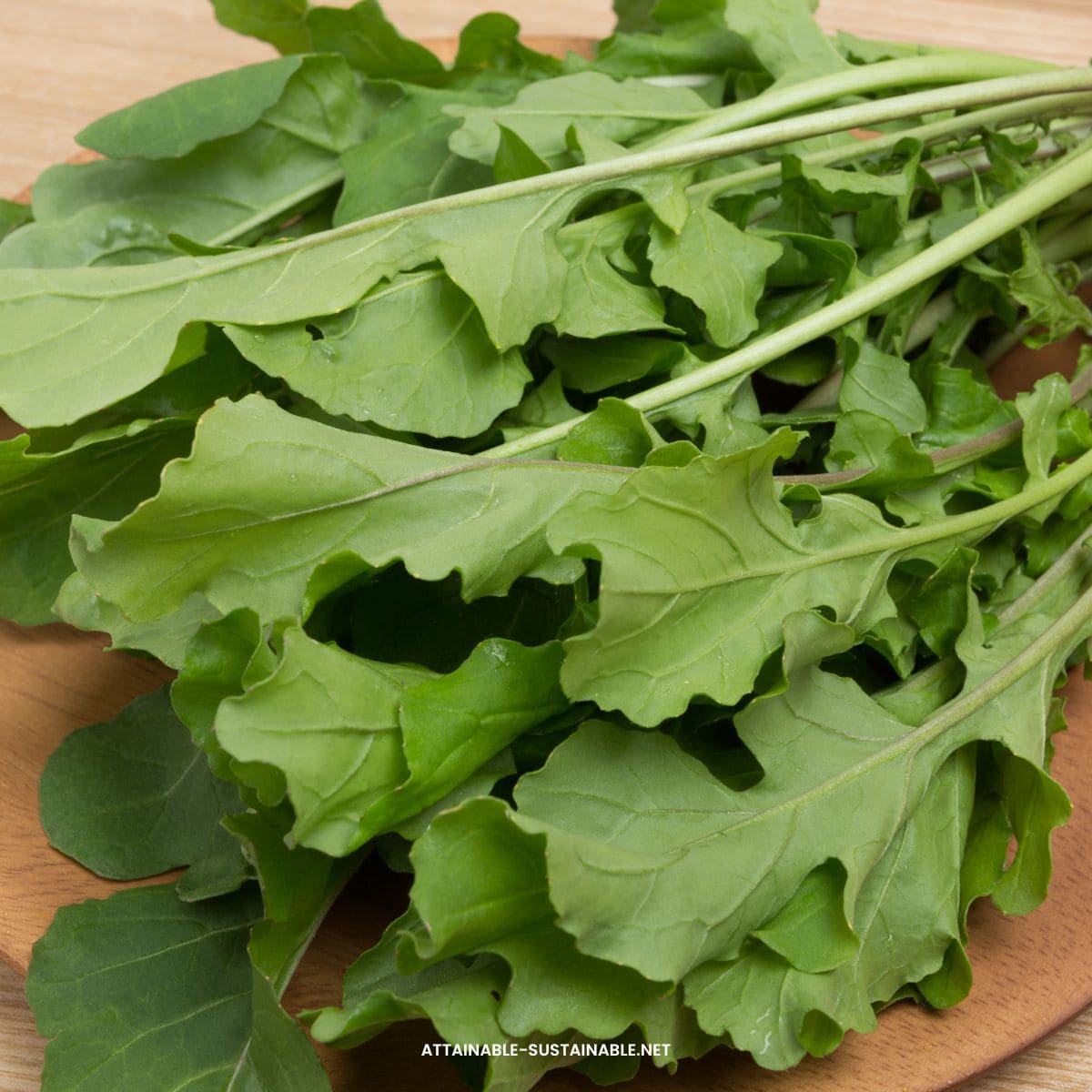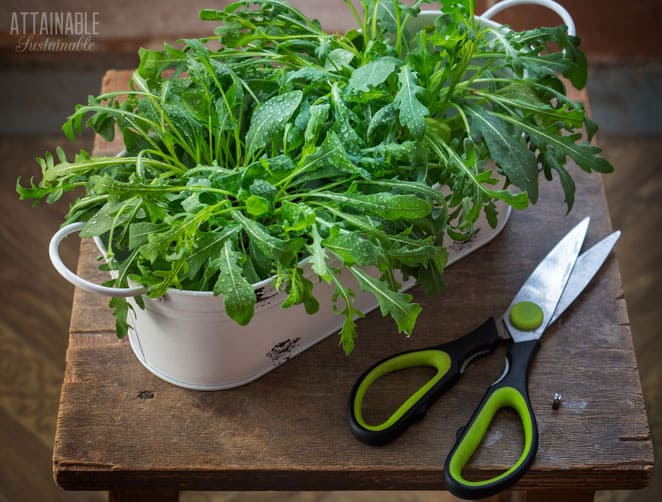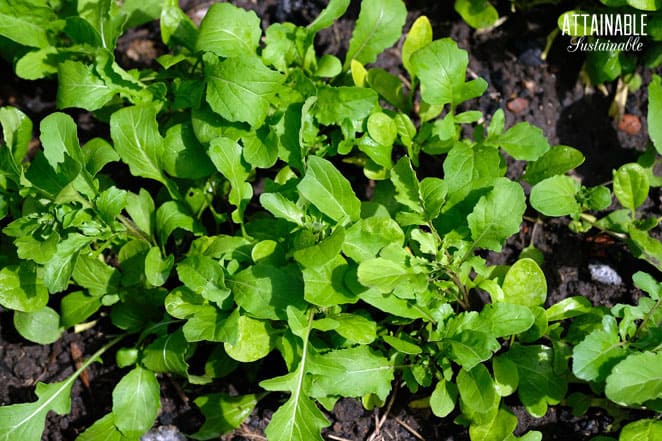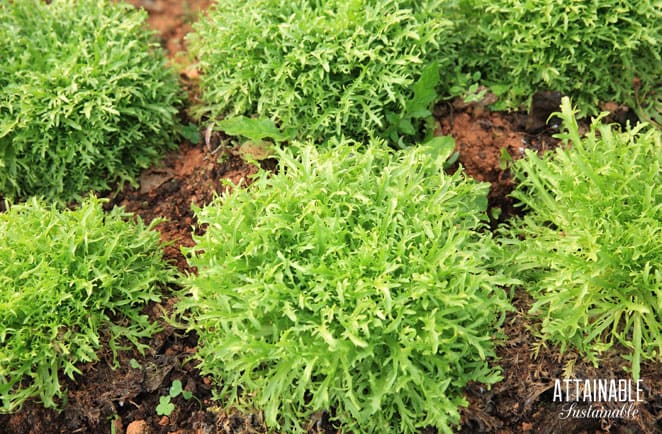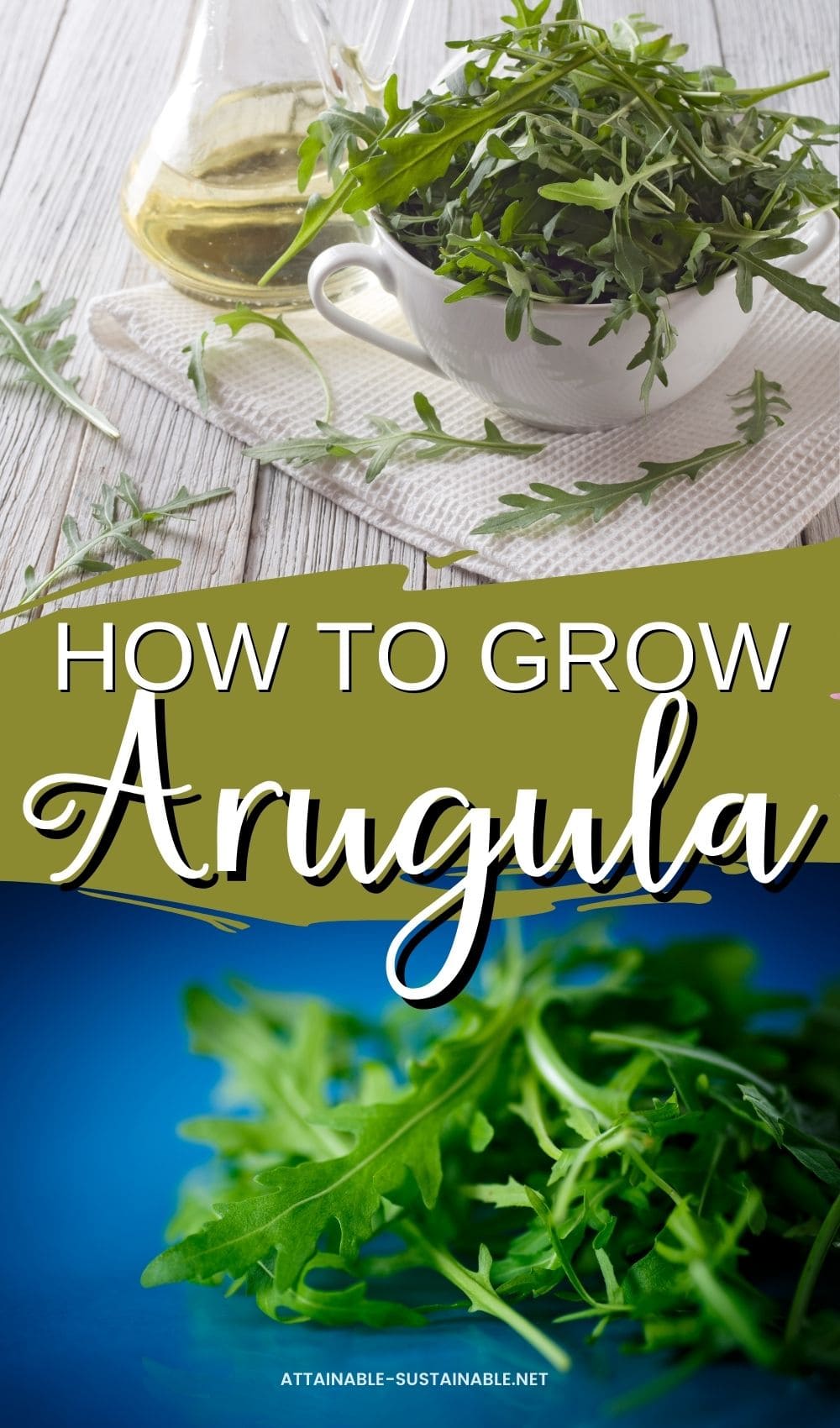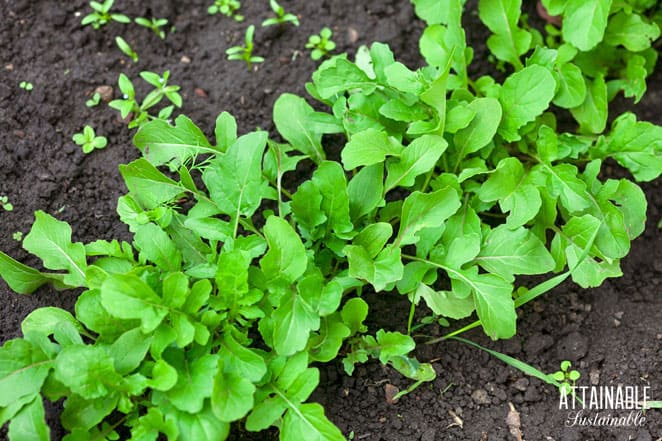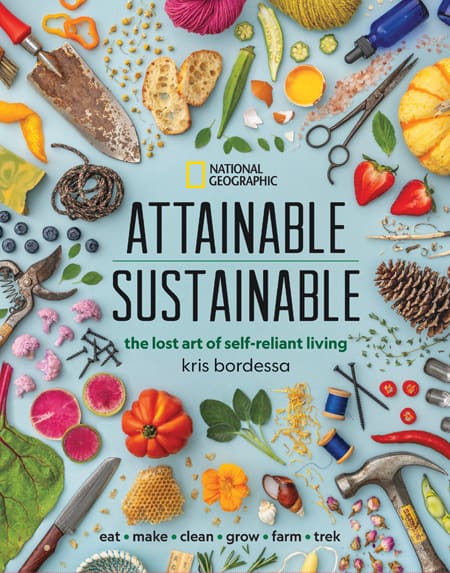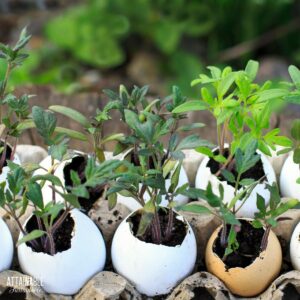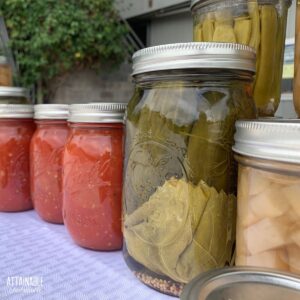Arugula is a type of easy-to-grow leafy salad green that adds a slight peppery kick to salads and mesclun mixes. It can be considered a gourmet item that’s a bit expensive to buy. Happily, growing your own arugula is quite easy!
Be sure to check out these other easy to grow veggies, too.
Contributed by Jodi Torpey, author and Master Gardener, in September 2021; this post has been updated.
Get to know Arugula (aka Rocket)
This gourmet green is known by a number of different names such as Italian cress, rocket (for its speedy growth), roquette, rucola, rugula, and garden rocket. Arugula leaves resemble radish leaves somewhat, with their dark green and deeply lobed leaves.
The common arugula (Eruca vesicaria) is the one most familiar to gardeners and cooks alike. However, wild arugula (Diplotaxis spp.) is another tasty green to add to the vegetable or herb garden.
Planting and growing arugula is similar to growing leaf lettuce, spinach and Swiss chard, except arugula forms rosettes that can grow 10-12 inches wide and tall.
Grow Some Greens!
Ready to grow fresh greens, no matter WHERE you live? Sign up for my
FREE quick-start guide and start growing some of your own food!
Arugula plants grow best when they have plenty of moisture and are timed to mature in the cool season, something that adds to their reputation of being cold-hardy. If temperatures turn too hot, too quickly, arugula can bolt or go to seed prematurely. To avoid bolting, time the planting in your area for cool spring weather and then plant another crop for fall.
Most arugula types can withstand a light frost without any cover, but plants can grow well in cold weather when planted in cold frames or hoop tunnels.
7 Varieties of Arugula
The most common arugula to grow is the familiar salad arugula, but you can choose to grow on the wild side with other arugula types in your vegetable garden, too.
Salad Arugula (Eruca spp.)
Astro is known to be more tolerant of hot weather than other types of argulas; harvests begin 21-38 days.
Italian arugula is a fast-growing type with delicious edible flowers; 21-28 days.
Balboa is a vigorous arugula variety that’s known to be heat tolerant; 28 days.
Speedy has serrated leaves like wild arugula, but has the mild taste of salad varieties; 30 days.
Wild Arugula (Diplotaxis spp.)
Wasabi arugula is a wild variety that tastes just like the spicy wasabi paste; 28-35 days.
Rustic arugula is a savory Italian variety with deeply indented leaves and tiny yellow flowers; 28-35 days.
Bellezia is another wild arugula type with serrated leaves and a long harvest season; 35-50 days.
When to Plant Arugula Seeds
Wait for the garden soil to warm to at least 35 degrees before planting. The best weather for planting arugula seeds is when days are warm and nights are cool. Ideal air temperatures for the best flavor range between 60-70 degrees. Hot daytime temperatures can cause arugula to become bitter or bolt (go to seed prematurely).
How to Plant Arugula
You can grow arugula from either seeds or transplants, but most gardeners prefer to direct sow arugula seeds for two reasons: to reduce the possibility of transplant shock and because it’s such a fast-growing crop.
Plant arugula seeds about ¼ inch deep and several inches apart in rows. Other alternatives are to spread seeds on their own or mix with other salad green seeds.
If you prefer to grow from transplants, either buy transplants or start seeds indoors in early spring. Plants take about 4-6 weeks to reach transplant size. Time the planting before the last frost date in your area for a spring harvest. A fall harvest can be planted in mid-to-late summer. Summer isn’t the best growing season for arugula, as it bolts quickly in too much heat. It likes cool weather.
For a continuous supply of arugula, continue planting seeds or transplants every 2-3 weeks. Some gardeners get three seasons of arugula from early spring to late autumn and into winter using the succession planting method.
Requirements for Growing Arugula
Light requirements
Arugula has similar light needs to lettuce, so you can plant in full sun or partial shade. If temperatures turn too hot too quickly in spring, protect plants with some shade cloth to keep plants from going to seed before they’re ready.
Soil requirements
Arugula grows in amended and well-drained soil. Before planting either arugula seed or transplants, prepare the planting bed by digging in a well-balanced fertilizer and spreading a 1-inch layer of high-quality compost over the planting site.
Water and fertilizer requirements
Make sure plants receive adequate moisture after planting and through the season. Don’t let soil dry completely. Plan for keeping soil moist with drip irrigation or a soaker hose set up along the garden rows.
A layer of organic mulch placed around plants will reduce weeds and help keep soil moist. Arugula has low fertilizer needs, but you may want to feed plants every few weeks to ensure a good harvest.
Growing Problems
To prevent birds from getting to seeds and young plants, use a lightweight row cover cloth over the planting area. Covering like this can also help speed germination by keeping the soil moist.
To avoid crowding plants and reducing air circulation, thin plants after the second set of true leaves start to grow. Thin to space plants about 10-12 inches apart, and use the thinnings to top early spring or fall salads.
After thinning, side dress with a nitrogen fertilizer or add a water-soluble fertilizer to a watering can.
Common Insect Pest Problems
Avoid aphids by companion planting with members of the carrot family, like dill, cilantro and fennel. The flowers will attract the kinds of beneficial insects that eat aphids. If aphids appear on plants, wash them off with a strong spray from the garden hose
Flea beetles can eat holes in arugula leaves. One way to avoid these arugula pests is to plant and protect plants with row cover tied down tightly at the edges. You could also plant arugula in tall containers or hanging baskets several feet off the ground where beetles can’t reach plants.
How to Grow Arugula in Containers
Like lettuces, arugula grows well in containers. Fill containers with a well-draining potting mix and plant seeds or transplants spacing to fit the size of the container.
How to Harvest Arugula
Young leaves, sometimes called baby arugula, can be cut at any time the leaves reach 2-3 inches in length; use small scissors to snip just the outer leaves so the plant can continue to grow, much like you can harvest leaf lettuce. Don’t pull up the entire plant, as it will continue to produce for months if harvested leaf by leaf.
Harvest leaves often until the weather turns hot or the plants send up a flower stalk. (The small white flowers are edible, too, though.)
Keep harvesting arugula leaves for salad greens while the leaves are young and tender. After clipping leaves from plants, rinse with cool water, dry and store arugula in airtight bags in the refrigerator. Use as quickly as possible.
Uses for Arugula in the Kitchen
The leaves of arugula have a characteristic peppery flavor, and they can be served raw or cooked.
Arugula is a good source of iron and vitamins A and C and the leafy greens make a spicy addition to garden-fresh salads. The leaves also make a nice side dish when steamed like spinach or sauteed with other vegetables. You can also toss fresh leaves into soups to let them wilt slightly right before serving.
If you use your kitchen creativity, you can find all kinds of uses for fresh arugula. Swap out leaves for lettuce in sandwiches, wraps or pitas; whirl leaves with fresh mint for a new take on pesto; create interesting salads by mixing arugula with white beans or grilled steak; sprinkle on top of hot pizza, or mix leaves into fruit salads.
When to Harvest Arugula Seeds
If you want to try to save seeds, let a few plants go to flower and let the seed pods fully mature. Cut the entire flower stalk and finish drying. You can hang the stalks to dry, but be sure to keep an eye on them; once the pods dry fully they can crack open and the tiny seeds will end up on the ground. Hanging the stalks over a tarp or sheet can solve this problem.
You can also place the seed pods in a paper bag. Leave the bag open and set it in a cool, dry place. Once fully dried, use your hands to break open the seed pods in the bag, then shake well. The arugula seeds will drop to the bottom of the bag where you can retrieve them.
Separate seeds from other plant material and store them in a cool, dark and dry place. They should last for several more seasons.
FAQs
Is arugula perennial?
It depends! Common garden arugula is an annual and is planted yearly. Wild arugula is a perennial.
Rocket vs. arugula – what’s the difference?
Nothing. These are two different names for the same crop. Arugula seems to be more common in North America, while European countries call it rocket.

